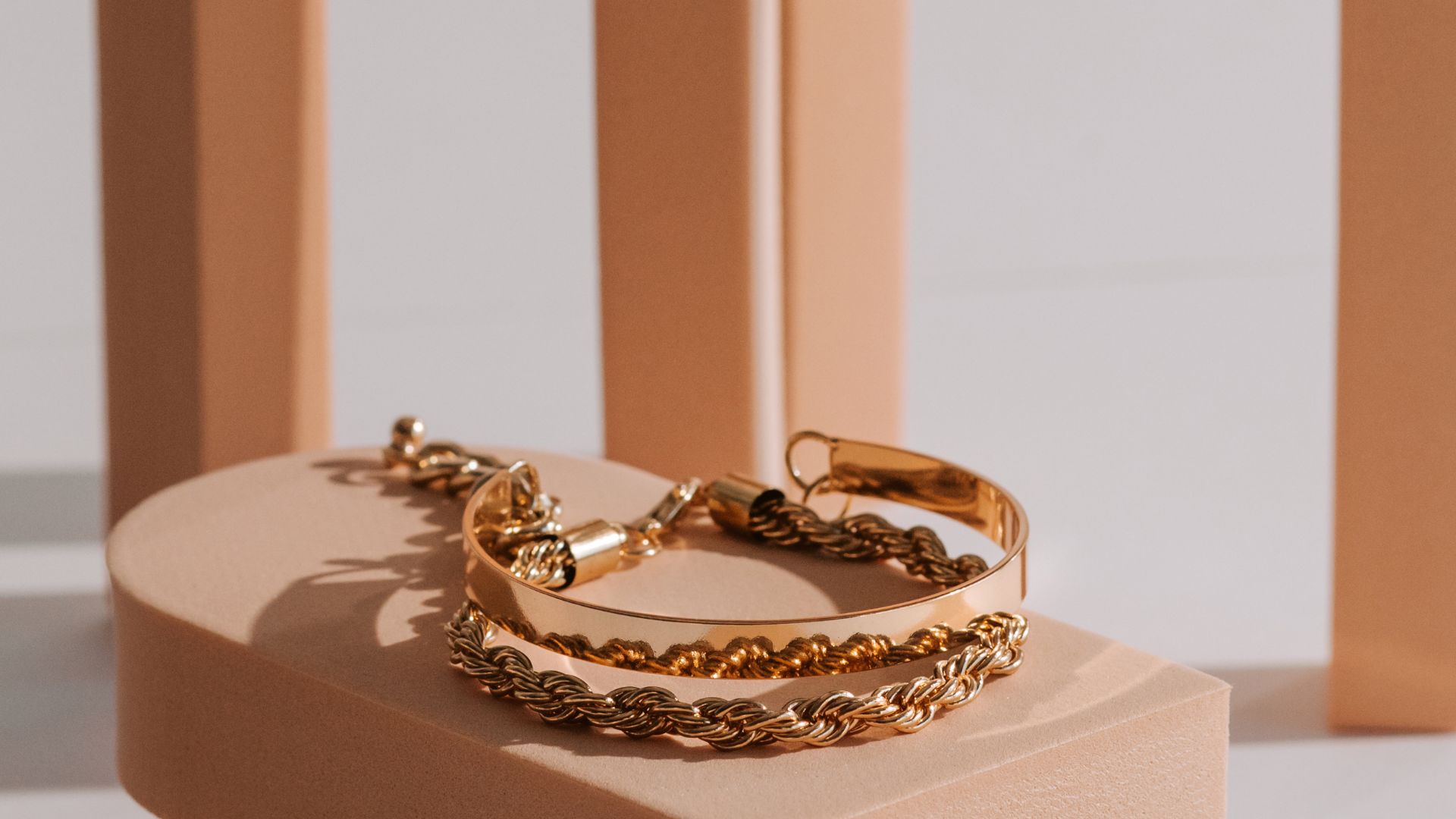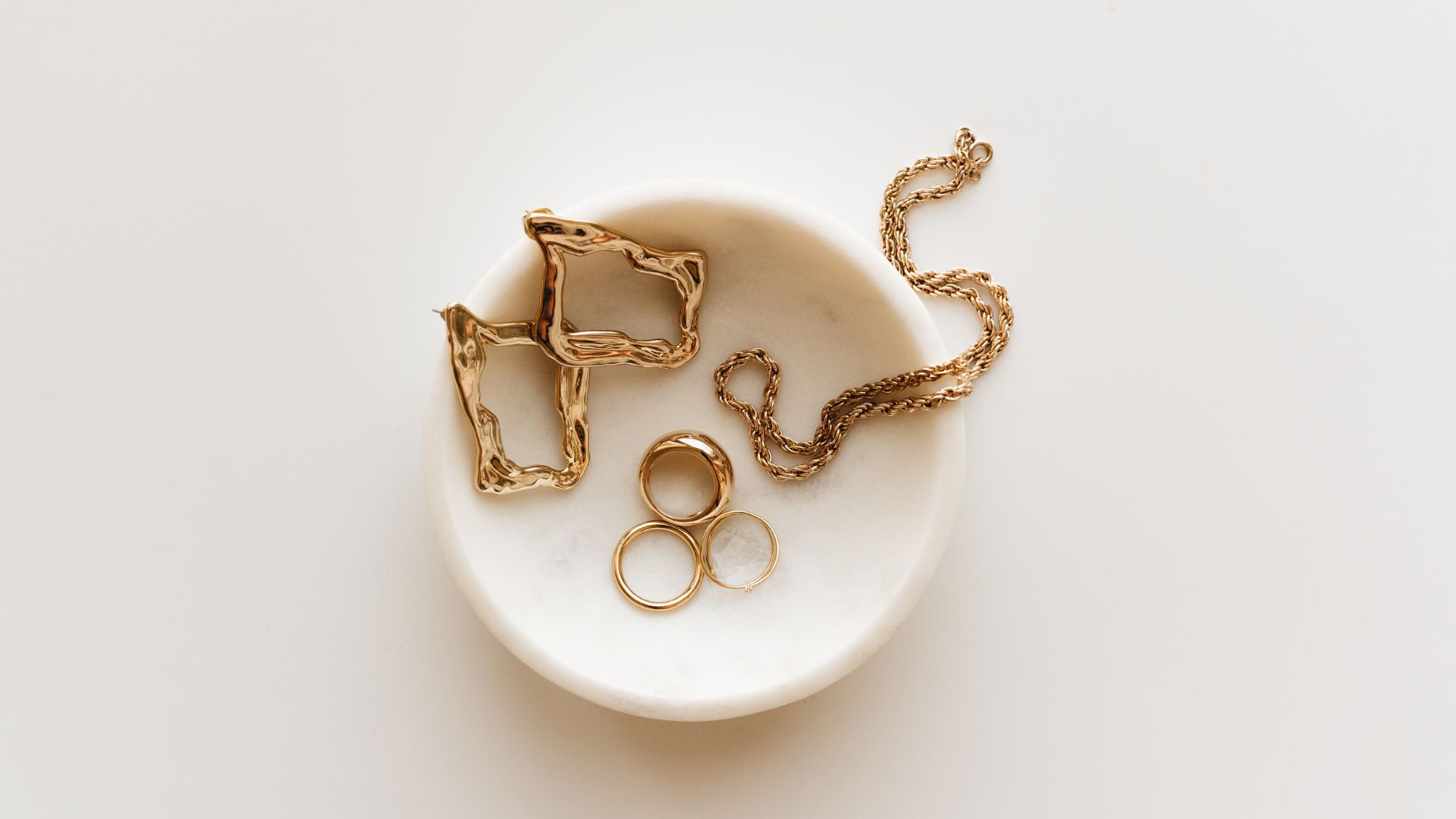
Exploring the various finishes and textures in gold jewelry
Gold jewellery is often admired for its timeless beauty and luxurious appeal. While the quality of the metal itself plays a significant role in the overall look of a piece, it’s the finishes and textures that truly bring it to life. Whether it’s the high-shine gleam of polished gold or the subtle sophistication of a matte finish, the texture of the gold can dramatically affect the aesthetic of the jewellery.
In this article, we’ll explore how different finishes and textures can influence the appearance of gold jewellery, and how these techniques can be used to create unique and distinctive pieces:
- The impact of finishes and textures on the appearance of gold jewelry
- Polished vs. matte: Comparing the classic polished finish with the more modern matte finish
- Textured gold: Exploring different textures like hammered, brushed, or satin finishes
- How different finishes and textures can give a piece of jewelry a unique identity

The impact of finishes and textures on the appearance of gold jewelry
The finish of a piece of gold jewellery is more than just a cosmetic detail—it can completely transform the piece’s overall character and style. For instance, a polished finish may make the gold appear bright and shiny, while a matte or brushed finish can offer a more understated, modern feel. Textures, on the other hand, can add depth and interest to a piece, making it stand out from the more common smooth surfaces seen in mass-produced jewellery.
Goldsmiths use various techniques to achieve different textures and finishes, and each approach has its own unique impact. Whether you’re designing a classic engagement ring, a statement necklace, or a delicate bracelet, the finish and texture you choose can reflect the wearer’s personality and add a level of craftsmanship that enhances the jewellery’s value.
Polished vs. matte: Comparing the classic polished finish with the more modern matte finish
The polished finish is arguably the most traditional and classic approach to finishing gold jewellery. It’s characterised by a high-shine, reflective surface that showcases the purity and richness of the gold. A polished piece of jewellery will often look smooth and mirror-like, catching and reflecting light in a way that draws attention. This finish is commonly seen in fine jewellery, engagement rings, and luxury items, as it exudes an air of elegance and refinement.
One of the key benefits of a polished finish is that it enhances the natural colour of the gold, whether it’s yellow, white, or rose. However, polished surfaces are more prone to showing scratches and fingerprints, which means they require more maintenance to keep looking their best.
On the other hand, the matte finish has gained popularity in recent years, particularly for those seeking a more contemporary or minimalist look. A matte finish is characterised by a smooth, non-reflective surface that provides a soft, understated look. Instead of reflecting light, a matte finish absorbs it, creating a subtler appearance that’s perfect for modern jewellery styles.
Matte finishes are often used in men’s jewellery or for creating a more casual, everyday aesthetic. They’re also ideal for designs that feature a more rustic or natural vibe. One of the benefits of matte finishes is that they’re less prone to showing scratches or fingerprints compared to polished surfaces, making them easier to maintain.

Textured gold: Exploring different textures like hammered, brushed, or satin finishes
While polished and matte finishes are popular choices, there are many other textured finishes that can be used to add unique appeal to gold jewellery. Textured finishes can give a piece depth, character, and a more artisanal feel. Here are a few of the most common textured finishes used in goldsmithing:
Hammered finish
A hammered finish is achieved by using a hammer and various tools to create indentations or patterns on the surface of the gold. This type of texture has a distinctive, organic look and can add both depth and visual interest to a piece. Hammered finishes are commonly seen in rings, bracelets, and earrings, as the texture gives a rustic, handmade feel. The uneven surface catches the light in unique ways, creating a dynamic play of shadows and highlights.
Brushed finish
The brushed finish is created by rubbing the surface of the metal with a fine abrasive pad or wire brush, creating a series of tiny, parallel lines. The result is a smooth, satin-like texture that offers a slightly less reflective surface than polished gold, while still maintaining some shine. Brushed finishes are popular for creating jewellery with a contemporary, sophisticated appearance, especially for rings and bracelets.
Satin finish
A satin finish is similar to a brushed finish but has a softer, more subtle texture. It’s typically created using a finer abrasive or polishing pad, resulting in a smooth surface with a delicate sheen. Satin finishes are often used for more refined, elegant pieces, offering a middle ground between polished and matte. It’s a great choice for those who want a slightly muted shine without going completely matte.
Creating unique effects: Techniques for creating intricate textures and finishes
In addition to basic finishes like polished, matte, brushed, and hammered, there are more advanced techniques that can be used to create even more intricate textures and effects in gold jewellery. These techniques often require more specialised tools and expertise but can result in truly unique and one-of-a-kind pieces.
Etching
Etching is a process that involves using acid or a laser to carve intricate designs or patterns into the surface of the gold. The acid or laser burns away small sections of the metal, creating detailed textures or images. Etching is often used to add intricate designs to jewellery, such as personalised initials, floral patterns, or geometric shapes. It’s a popular technique for creating custom, bespoke pieces that are deeply personal.
Sandblasting
Sandblasting is another technique used to create a textured surface by blasting the gold with fine sand or abrasive particles at high pressure. This technique results in a rough, matte texture that has a slightly more industrial or rugged appearance. Sandblasting is often used to create a vintage, worn effect on jewellery or to add a more bold, contemporary texture to pieces.
Polished vs. Textured Combinations
Goldsmiths often combine various textures and finishes in a single piece of jewellery to create contrast and depth. For example, a ring might have a polished band with a hammered texture on the top, or a pendant might combine brushed gold with etched details. This approach allows the jeweller to highlight different areas of the piece, adding interest and visual complexity.
How different finishes and textures can give a piece of jewelry a unique identity
The finish and texture of gold jewellery play a significant role in shaping its overall look and feel. Whether you prefer the classic shine of polished gold, the understated elegance of matte, or the bold character of a hammered finish, the texture and finish you choose will define the piece’s identity.
These techniques not only enhance the beauty of the jewellery but also allow the goldsmith to express their creativity and craftsmanship. From delicate satin finishes to intricate etching and sandblasting, there are endless possibilities to create unique, one-of-a-kind jewellery that stands out.
Let’s recap what we’ve learned today:
- The finish and texture of gold jewellery dramatically affect its appearance, creating unique styles and enhancing the overall aesthetic of the piece.
- Polished finishes offer a high-shine, classic look, while matte finishes provide a more subtle, contemporary feel that is easier to maintain.
- Textured finishes like hammered, brushed, and satin add depth, visual interest, and a handmade feel, making jewellery stand out with unique patterns and tactile qualities.
- Techniques like etching and sandblasting allow for intricate designs and personalised effects, adding one-of-a-kind details to jewellery pieces.
- Combining different finishes and textures, such as polished with hammered or etched elements, creates contrast and depth, making the jewellery more dynamic and visually appealing.
The beauty of textured finishes is that they allow jewellery to feel more personal and artistic, providing pieces that are far from ordinary. Whether you’re looking for something traditional or contemporary, the variety of finishes and textures available today means there’s a perfect style to match every personality and occasion. So, next time you’re choosing a piece of gold jewellery, think about the texture and finish—it’s the detail that can transform a beautiful piece into something truly extraordinary.


